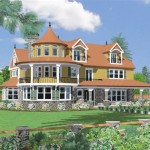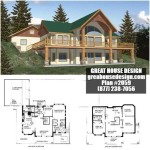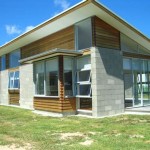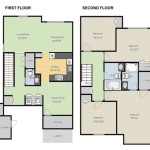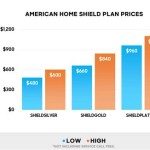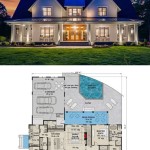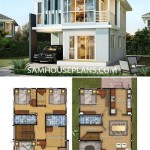Floor Plans For Tiny Houses On Wheels: Maximizing Space and Functionality
Tiny houses on wheels (THOWs) represent a growing movement towards simplified living and financial freedom. A crucial aspect of realizing this dream is the floor plan, which dictates the functionality, comfort, and overall livability of the limited space. Designing an effective floor plan for a THOW requires careful consideration of several factors, including personal needs, lifestyle, building codes, and towing restrictions. A well-conceived plan optimizes every square inch, turning a small space into a functional and enjoyable home.
The fundamental difference between designing a standard house and a THOW lies in the constraints. Traditional houses offer the luxury of expansive layouts and dedicated spaces. THOWs demand multi-functional design, innovative storage solutions, and efficient use of vertical space. The floor plan must integrate these elements seamlessly to create a comfortable and practical living environment. This article will explore key considerations and strategies for developing effective floor plans for tiny houses on wheels.
Prioritizing Essential Needs and Lifestyle
Before even touching a design tool, it is imperative to define the essential needs and lifestyle habits of the inhabitants. This involves a thorough evaluation of daily routines and long-term goals. Consider the following questions:
How many people will be living in the tiny house full-time? This will directly impact the required sleeping arrangements, bathroom size, and storage capacity. A single occupant might prioritize a larger living or work area, while a couple will need to focus on shared space and privacy.
What are the cooking habits? A person who rarely cooks might opt for a minimal kitchen setup, focusing on a small refrigerator, a portable cooktop, and a compact sink. Conversely, someone who enjoys cooking regularly will need a more comprehensive kitchen with ample counter space, a full-sized refrigerator, and potentially even an oven.
What are the work or hobby requirements? Many individuals choose to work remotely from their tiny houses. This will necessitate a dedicated workspace with adequate lighting, ventilation, and electrical outlets. Hobbies like painting, woodworking, or music might require specialized storage and work areas.
How much storage is truly necessary? The decluttering process is crucial for tiny living. Assess belongings and determine what is essential and what can be eliminated. Prioritize storage solutions that maximize vertical space and utilize hidden areas like under-bed storage, overhead cabinets, and built-in shelving.
What are the bathing and sanitation preferences? Options range from composting toilets and shower stalls to combined systems and even access to external facilities, depending on the intended living location and regulatory restrictions.
Addressing these questions honestly and thoroughly will provide a clear understanding of the critical elements that need to be incorporated into the floor plan.
Understanding Size and Weight Limitations
THOWs are subject to specific size and weight restrictions imposed by state and local regulations. These limitations primarily pertain to transportation safety and are crucial to consider before finalizing the floor plan. Key constraints typically include:
Width: The maximum width of a THOW is generally limited to 8.5 feet to allow for safe passage on highways without requiring special permits. Exceeding this width can lead to significant transportation challenges and potential legal issues.
Length: The maximum length usually ranges from 20 to 40 feet, depending on the jurisdiction. Longer THOWs require specialized trailers and may be subject to stricter permitting requirements.
Height: The maximum height is typically capped at 13.5 feet to clear bridges and overpasses. This constraint impacts the loft design and overall interior headroom.
Weight: The gross vehicle weight rating (GVWR) of the trailer must be carefully considered. Exceeding the GVWR can compromise the structural integrity of the trailer and create dangerous towing conditions. Material selection and the distribution of weight within the THOW are crucial factors in managing weight.
These limitations directly influence the available square footage and the layout of the floor plan. It is important to research and comply with the specific regulations in the intended location of the THOW. Ignoring these restrictions can result in costly modifications or legal penalties.
Furthermore, the trailer itself plays a significant role in floor plan design. The trailer's dimensions, axle configuration, and tongue length dictate the overall footprint and weight distribution capabilities. Ensuring the trailer is appropriately sized and rated for the intended THOW design is paramount.
Optimizing Space with Multi-Functional Design
Given the limited square footage, multi-functional design is essential for THOWs. Every space should serve multiple purposes to maximize efficiency and minimize clutter. Some examples of multi-functional design principles include:
Convertible furniture: Sofa beds, foldable tables, and Murphy beds are excellent choices for maximizing space. These pieces can easily transform a living area into a bedroom or a dining room into a workspace.
Integrated storage: Incorporate storage into every available nook and cranny. Under-bed storage, built-in shelving, and hidden compartments can significantly increase storage capacity without sacrificing usable space.
Dual-purpose areas: Designate areas that can serve multiple functions. For example, a kitchen island can double as a dining table or a home office workstation. A loft can be used as a sleeping area during the night and a storage space during the day.
Vertical space utilization: Maximize vertical space with tall cabinets, shelving units, and loft areas. This can significantly increase storage capacity and create a sense of openness.
Consider the flow of movement within the tiny house. A well-designed floor plan should allow for easy circulation and prevent bottlenecks. Avoid creating narrow hallways or cramped corners that can make the space feel claustrophobic.
Light and ventilation also contribute to the perceived spaciousness of a tiny house. Incorporate large windows and skylights to maximize natural light and ventilation. Proper ventilation is crucial for preventing moisture buildup and maintaining air quality.
Furthermore, consider the orientation of the THOW in relation to the sun and prevailing winds. Optimizing the placement of windows and doors can help regulate temperature and reduce energy consumption.
Another key consideration is the placement of appliances. Choose compact and energy-efficient appliances that are appropriately sized for the tiny house. Consider stacking a washer and dryer to save space or opting for a combination unit.
Flexibility is also key. A floor plan that can adapt to changing needs and lifestyles will be more sustainable in the long run. Consider incorporating modular elements or features that can be easily reconfigured.
In conclusion, designing a functional and comfortable floor plan for a tiny house on wheels requires a holistic approach that considers personal needs, lifestyle, size and weight limitations, and multi-functional design principles. By carefully planning and prioritizing these elements, it is possible to create a tiny house that is both efficient and enjoyable.

Tiny House Floor Plans 32 Home On Wheels Design

Escape Traveler A Tiny House On Wheels That Comfortably Sleeps 6 Floor Plans Trailer

224 Sq Ft Tiny House On Wheels By Living Homes Small Diy

Free Tumbleweed Diy Tiny House Plans Houses

Tiny House Plans The Project

27 Adorable Free Tiny House Floor Plans Craft Mart

Design A Tiny House On Wheels Tips And Tools For Diyers

Tiny House Floor Plans 32 Home On Wheels Design

Easy Tiny House Floor Plan Designs

Escape Traveler A Tiny House On Wheels That Comfortably Sleeps 6 Floor Plans Trailer

